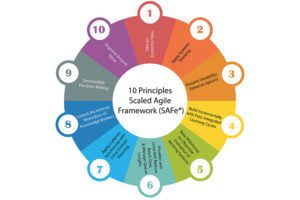
The Concept of Shu-Ha-Ri in Agile
The concept of Shu-Ha-Ri comes from the Japanese martial art of Aikido.
Shu (守): The first stage, which means that one must memorize everything exactly as the teacher shows. It requires many years of training, or else there will be no foundation for moving on to the next stage.
Ha (破): The second stage, where the learner reflects on their actions, changes the rules, tries to break them, and builds a new system of their own rules. They also learn new techniques from other teachers. Many try to do this too early, overestimating their capabilities.
Ri (離): The third stage, according to which one needs to free oneself from rules—there are no more rules, only the natural course of things (Dao). “Ri” means to rise above everything that was learned before, to create higher and more general principles.
The Shu-Ha-Ri model can be adapted not only for martial arts but is also an ideal metaphor for Agile team development.
Shu: We strictly adhere to Agile rules. We see that all Agile meetings/ceremonies are conducted, and all rules are followed. For example, the Daily Stand-up does not exceed 15 minutes, and the whole team discusses progress in achieving iteration/sprint goals.
Ha: Now that everyone is familiar with the basic rules, we can begin to improve and make amendments to them. Referring to the example above, perhaps we will review our Daily Stand-ups and change their time, or we will go through each user story instead of listening to each person in turn. Practicing this approach, we can see what works and what doesn’t. Retrospectives will greatly assist us in this.
Ri: We have departed from the “standard” structure and mechanisms and have begun to set our own rules.
Tag:Agile, Project, Terminology



